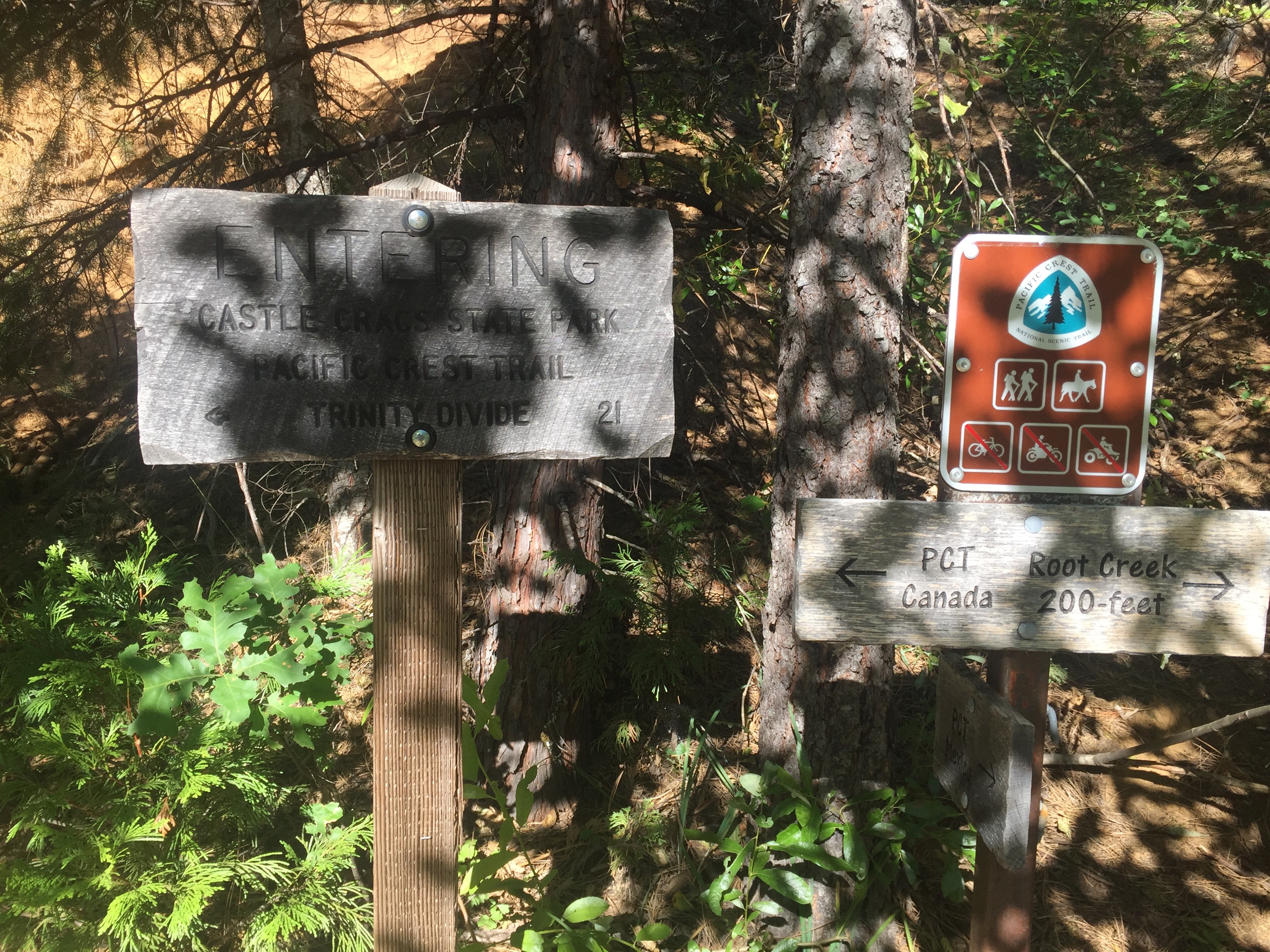
If you remember last week I started at this point and went south. Today I am starting here and going the normal direction towards Canada. The trail starts by going up for a bit but then changes into a very wide, very soft, and very flat trail.
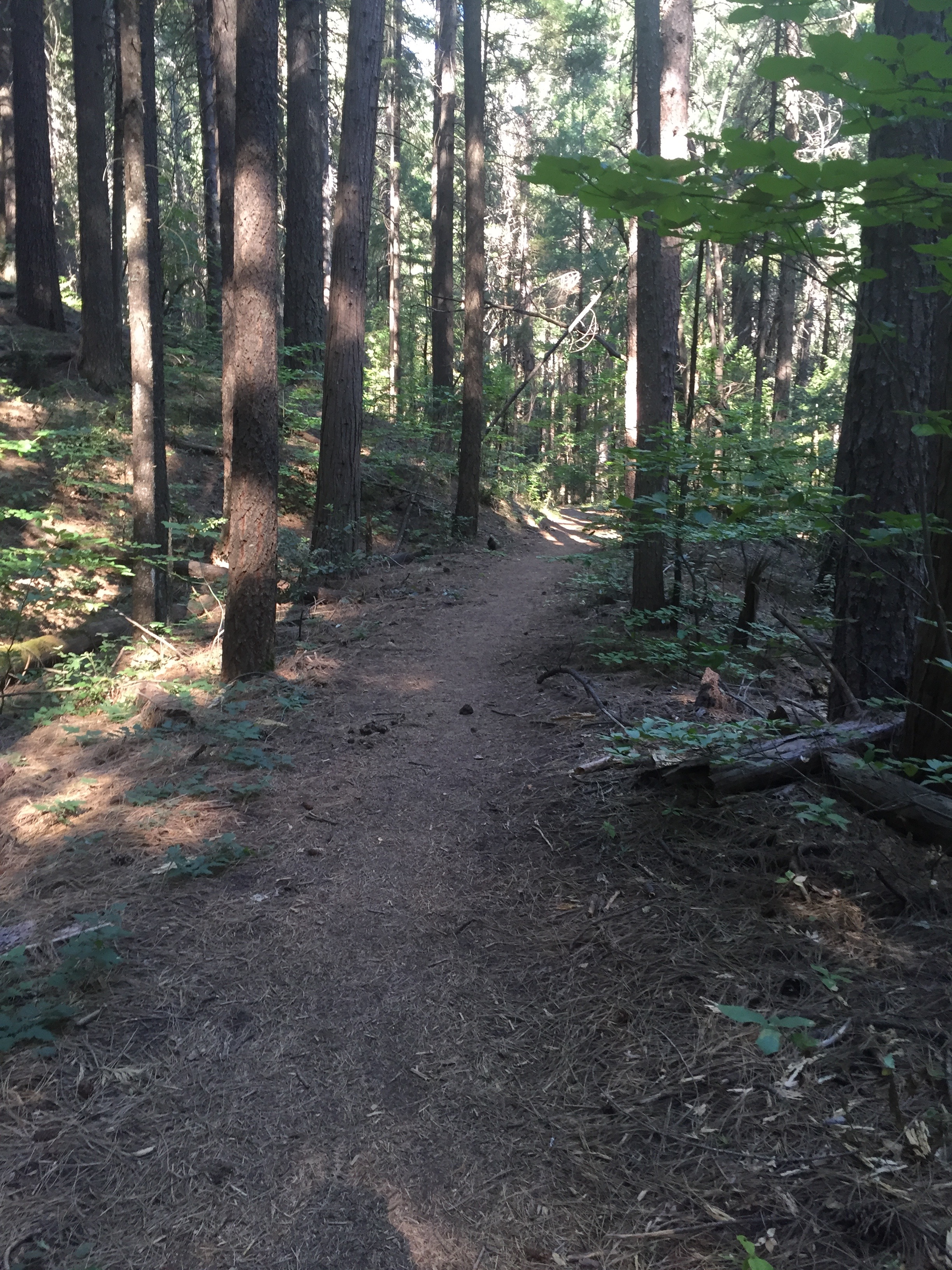
After about an hour I entered into the Castle Crags Wilderness and again wonder if I am still in the state park. They like to tell you when you enter but not when you leave.
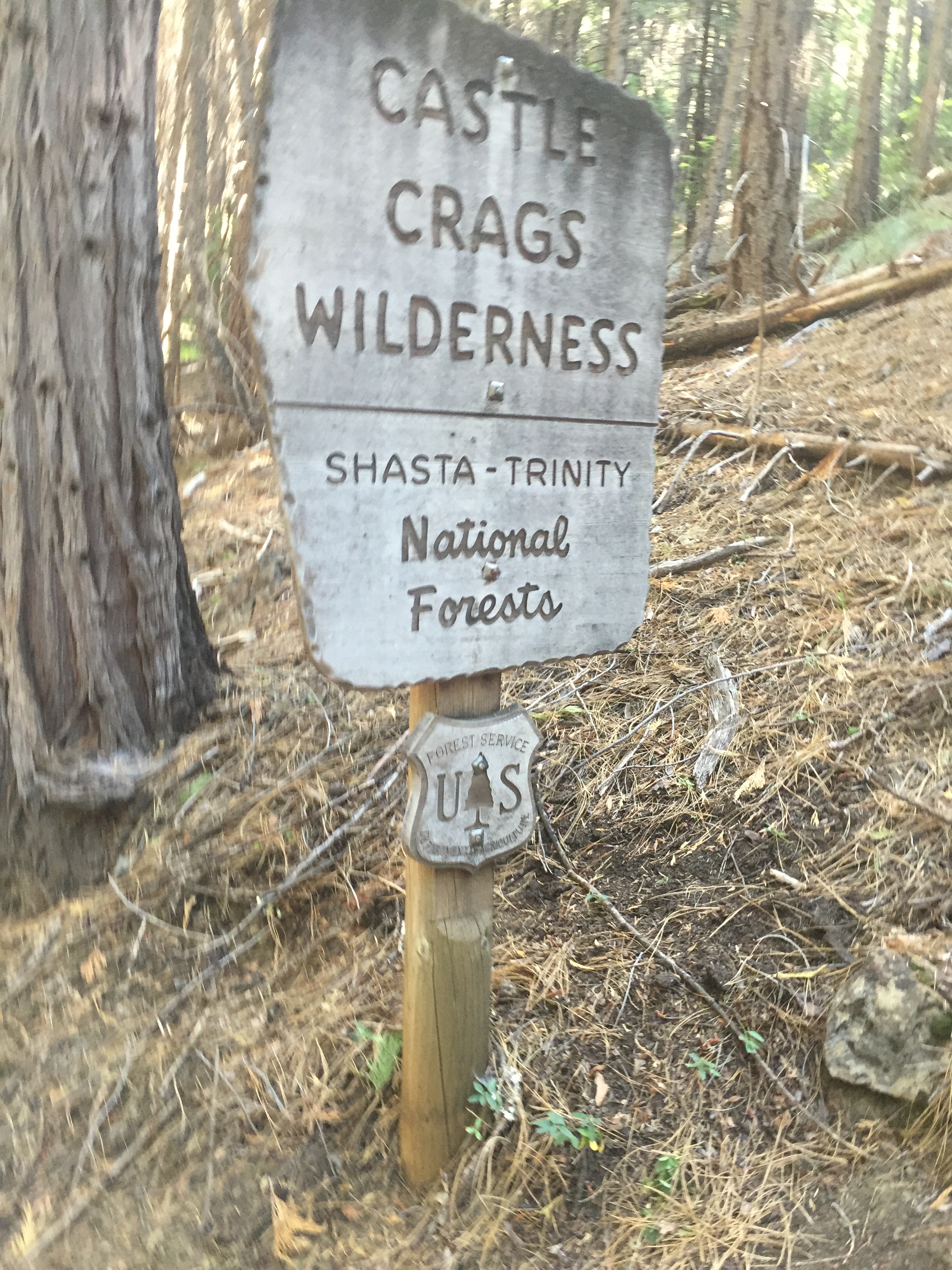
Here is some information about the wilderness area taken from wiki.
The Castle Crags Wilderness is a 12,232-acre (49.50 km2) wilderness area in the Castle Crags rock formations of the Trinity Mountains, and within the Shasta-Trinity National Forest, in northwestern California. It is located in Siskiyou County and Shasta County, 40 miles north of Redding and south of Mount Shasta City. The US Congress passed the California Wilderness Act in 1984 which set aside the wilderness.
Elevations of the Castle Crags range from 2,500–7,300 feet (762–2,225 m). The Trinity Mountains are a range in the Klamath Mountains System and the Klamath geological province. The prominent spires in the southeast that make up the Castle Crags are the main attraction and are similar to the granitic rock landscape in parts of Yosemite National Park. In the northern portion of the wilderness, the landscape is more like the Klamath Mountains with glacial erosion, several cirques, and abundant rainfall with a high, east-trending divide. The area is bounded on the east by the Sacramento River, in the north by the South Fork Sacramento River and in the south by the canyon of Castle Creek and the boundary of Castle Crags State Park.
One roadless area of 1,732 acres (7.01 km2) borders on the northwest and contains the largest glacial cirque, Castle Lake, which is near where the Modoc War’s 1855 Battle of Castle Crags took place. Now a historical landmark (California Historical Landmark No.16), the battle was fought on a ridge saddle between the lake and what is known as Battle Rock. The Wintu Indians who inhabited the area called the crags the Abode of the Devil and the Spanish explorers called it Castle del Diablo (Castle of the Devil.) There are mineral springs at the base of the crags which were used by the early fur traders, and after the Southern Pacific Railroad was completed into the area, health resorts sprang up as well. The railroad touted the beauty of the West to increase ridership, improve the West’s image, and hopefully, sell some of its land holdings.
Sunset was a publication started in 1898 by the passenger department of the Southern Pacific Railroad Company that described various places in the West and was named after its Sunset Limited railroad line which went from New Orleans to San Francisco. The magazine’s description of Castle Crags is the typical, flowery writing style of that era:
“These are peaks of a spur of the Trinity range, that rise abruptly in towers and pinnacles, splintered and riven in all manner of fantastic shapes. With every slight change in the position of the beholder they seem to march and countermarch, advance and recede, until one is ready to believe them moving.”
The advent of logging and mining brought even more people to the area with some mining continuing until the 1950s. In 1933, concerned citizens successfully worked to protect the area and were able to acquire much of the land that became the state park. President Reagan signed into law the California Wilderness Act in 1984 that protected another 10,500 acres (42 km2) and was added to the National Wilderness Preservation System.
The wilderness contains more than 300 species of wildflowers, including the Castle Crags harebell and the Castle Crags ivesia, both endemic, as well as tiger lily, monkey flower, and Indian rhubarb. Drier locations have yarrow, aster and buckwheat. Forested areas have incense cedar, white fir, ponderosa pine, several types of oaks with Pacific dogwood and maple in riparian zones. Meadows and brushlands have various kinds of manzanita along with huckleberry oak, chaparral and mountain whitethorn. Poison oak is common, as are rattlesnakes—dictating caution when hiking the trails. Black bears, coyotes, bobcats and mountain lions are some of the larger predators in this diverse habitat of bare granite, steep slopes, meadows and mountain streams.
A beautiful area to be hiking. Trees, trees, and more trees. Castle Crags is in the distance a bit. At least I think that is Castle Crags out there
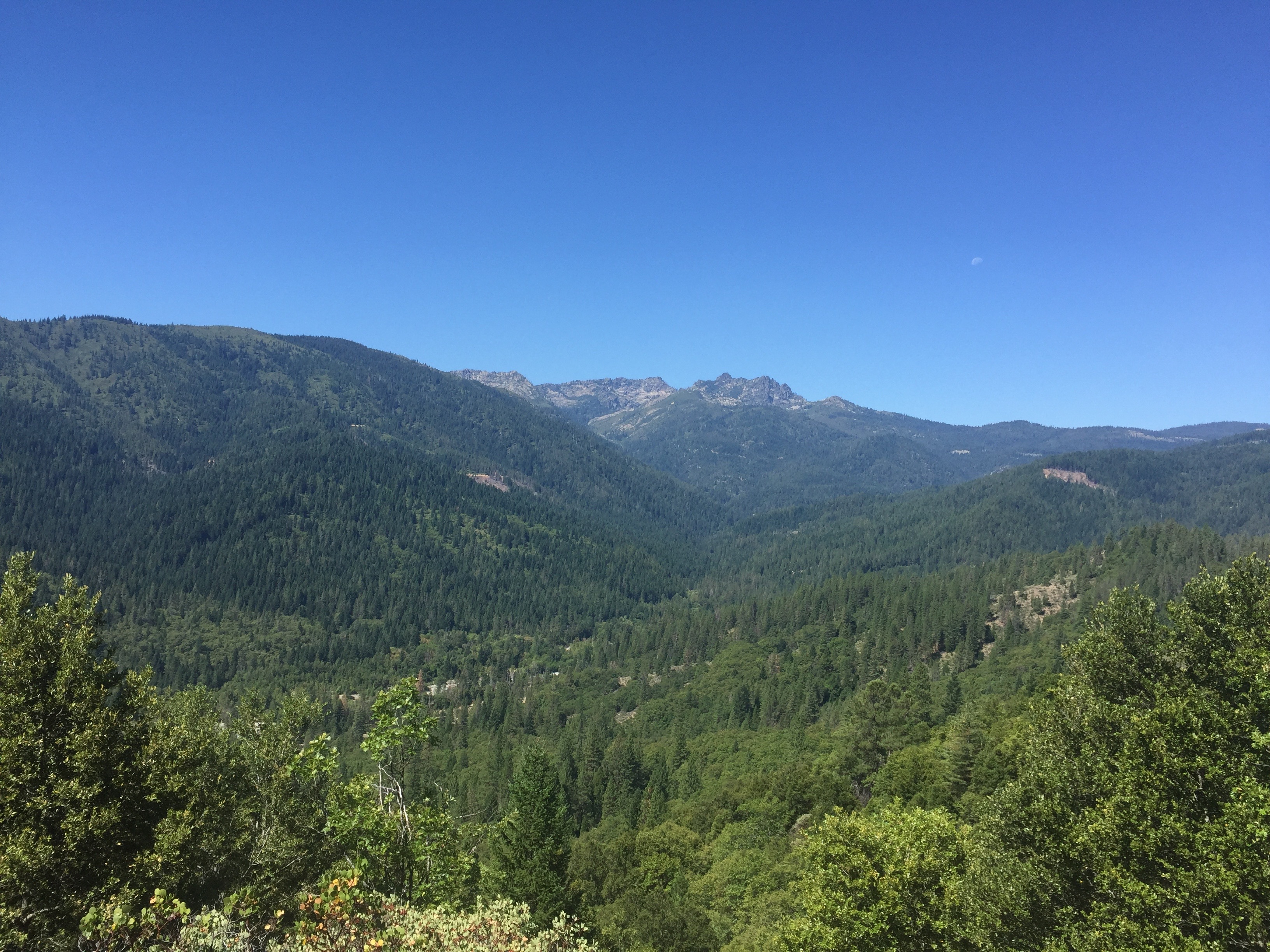
But then it is a lot closer all of a sudden so perhaps that thing about is just a bunch of rocks 🙂
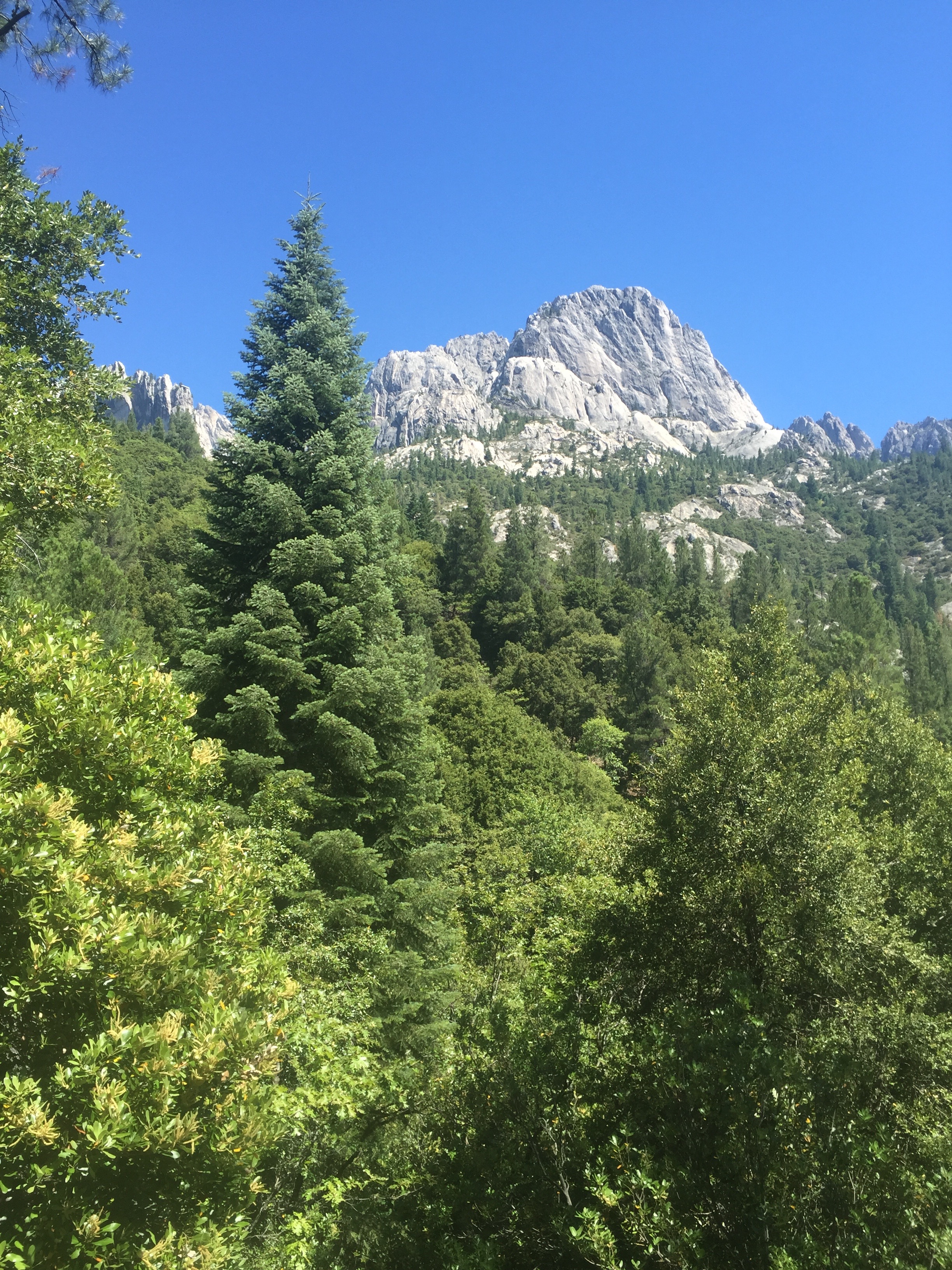
So all day is spent getting to the base of Castle Crags and I decide to camp for the night. What lies ahead is 4 miles of a very steep ascent and I will start that early in the morning. Towards the end of the day I meet a young hiker gal whose name is “Fire Ants” because she had a couple issues with them while walking through the desert. Fire Ants decides to stop as well. Fire Ants loves to talk. She has a German accent and indicates she is not really “legal” and so had to go off the trail for awhile to get her finger prints taken and she just got back on the trail that day. I’m not really following the conversation actually. I’m sure that is a shock for many of you.
The weather has turned really hot up here in Northern California and tomorrow is expected to be in the high 90’s even at elevation. I figure it won’t bother me that much. I love the heat. I would be wrong again.
Phone says 34000 steps and 41 flights